 |
Rhodonite (pink) and calcite (white) in matrix from the Sterling Hill Mine, Ogdensburg, NJ. 3 3/4" x 3". Photo by WP.
|
|
 |
Rhodonite crystals (dark pink), calcite (white) and minor franklinite (black) from Franklin, NJ. From the collection of, and photo by Robert A. Boymistruk.
|
|
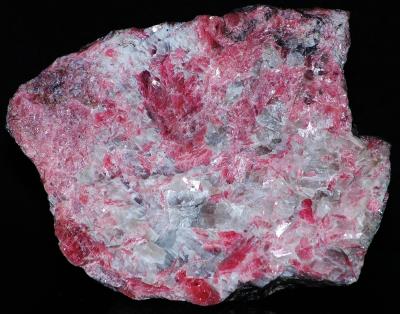 |
Bladed rhodonite (dark pink), calcite (white, light gray) and minor franklinite (black) from Franklin, NJ. From the collection of, and photo by Robert A. Boymistruk.
|
|
 |
Bladed rhodonite (pink to dark pink), franklinite (black), willemite (light green) with minor calcite (white, light gray) and hedyphane (light orange tan) from Franklin, NJ. From the collection of, and photo by Robert A. Boymistruk.
|
|
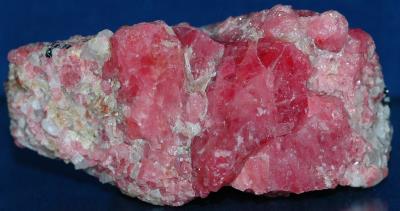 |
Rhodonite crystals (pink), calcite (white), willemite (light tan) and minor franklinite (black) from Franklin, NJ. From the collection of, and photo by Robert A. Boymistruk.
|
|
 |
Rhodonite crystals (pink), hedyphane (white), hematite (redish brown) and willemite (clear) from Franklin, N.J. 2 3/4" x 1 3/4". From the collection of, and photo by Robert A. Boymistruk.
|
|
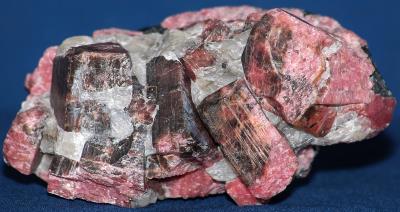 |
Corrugated rhodonite crystals (pink, dark brown coating), calcite (white) and minor franklinite (black) from Franklin, NJ. 3 3/4" x 2". From the collection of, and photo by Robert A. Boymistruk.
|
|
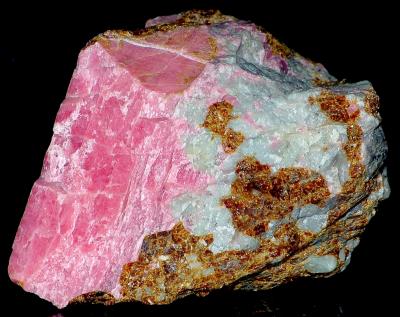 |
Rhodonite (pink), willemite (light green) and andradite garnet (golden brown) from Franklin, NJ. 3 1/4" x 3". From the collection of, and photo by Robert A. Boymistruk.
|
|
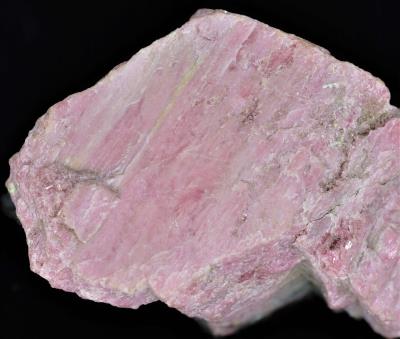 |
Rhodonite slickenside (pink) from the Sterling Hill Mine, Ogdensburg, NJ. Field of view 2”. From the collection of, and photo by WP.
|
|
